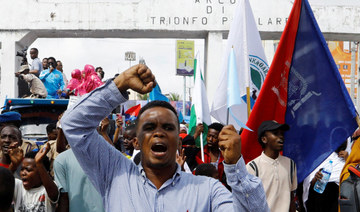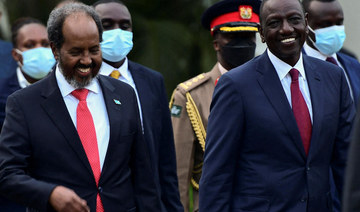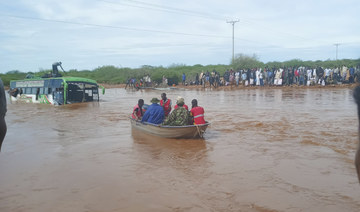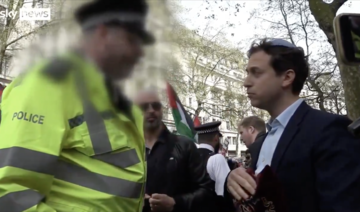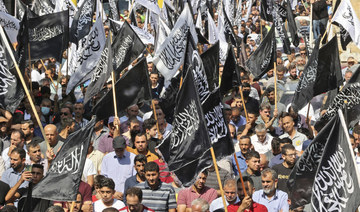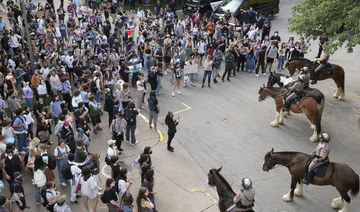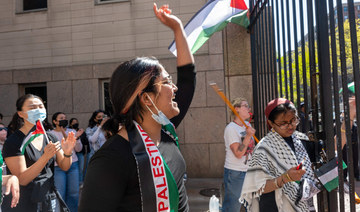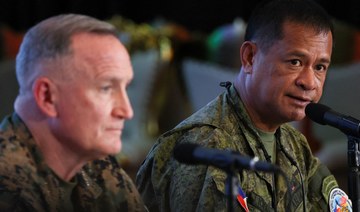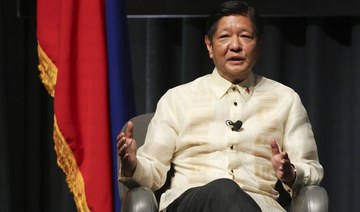PARIS: The QAnon conspiracy theory has been blamed for fueling a riot at the US Capitol on January 6. Social media companies have begun to crack down on its followers, with Twitter closing 70,000 accounts on Monday.
AFP explains the origins and beliefs of what was once a fringe Internet phenomenon:
In 2016, a false theory spread on the Internet, which eventually became known as “Pizzagate,” alleging that top Democrats ran a child sex-trafficking ring from a pizzeria in Washington DC.
It appeared to have been sparked by innocuous messages published by WikiLeaks recounting a Hillary Clinton fundraiser, and culminated in a man firing a gun in the restaurant in December 2016.
QAnon began in late 2017 with posts on the anonymous messaging board 4chan and a similar site, 8kun, by a user named “Q Clearance Patriot,” who claimed to be an American intelligence official with access to classified information.
Q alleged that Democrats ran a Satanic child-kidnapping and paedophile ring and that the US security establishment, referred to as the “deep state,” was conspiring to cover it up along with a global liberal elite.
According to the story, US President Donald Trump was working against them and a “great awakening” could be expected.
Q moved his or her posts to more prominent sites and picked up followers, helped by Trump’s repeated claims that there was indeed a plot against him from inside the US government.
Followers began to identify themselves with shirts and patches with large “Q” symbols, often together with the US flag and their motto “Where We Go One, We Go All,” expressed #WWG1WGA.
Fuelled by sharing on social media, the movement gathered momentum, picking up thousands then hundreds of thousands of followers in a loose network.
Researchers say the movement drew in white supremacists and other far-right followers, as well as so-called “anti-vaxxers” — people who believe in conspiracy theories about vaccines.
The Covid-19 pandemic appears to have been a major catalyst, with researchers saying there is an overlap between protesters against mask-wearing and social distancing and QAnon believers.
The QAnon movement is a “sponge for conspiracy theories. Everything is taken seriously, from anti-Semitism to 5G to masks, including science fiction,” said Internet researcher and academic Tristan Mendes France from the University of Paris.
Miro Dittrich, a German researcher who monitors online extremism, said conspiracy theories tended to flourish in times of crisis, when people feel they have no control or are looking for scapegoats.
“As after September 11, which inspired many conspiracy theories, I fear we are witnessing the same phenomenon with the pandemic,” Dittrich told AFP recently.
In Europe, where QAnon has gathered tens of thousands of followers, strict lockdowns have also helped garner interest, according to Dittrich.
“Confinement has played a role, with people being isolated from their social environment and spending a lot of time online,” he said.
Research by the London-based ISD think tank found that QAnon-related posts on Facebook nearly tripled between March and June last year, when stay-at-home orders were in place around the world.
Trump has never condemned the movement and fed QAnon fever before last November’s US presidential election, floating his own conspiracy theories about a planeload of black-clad saboteurs disrupting his party convention.
“It is gaining in popularity,” he said approvingly in August last year. “They like me very much.”
Rich Hanley, a professor at Quinnipiac University’s School of Communications in Connecticut, told AFP that Trump reflects — and profits from — a society ever more lost in the smoke and mirrors of the Internet.
“He may be an outlier among presidents, but not among a growing number of conspiracy theory-loving Americans,” Hanley told AFP in September.
Trump has also lavished praise on Marjorie Taylor Greene, one of several QAnon followers elected to the US Congress last November.
Greene, who has said that “Q is a patriot,” said she was “inspired” to run for office by Trump.
Following the riot at the Capitol, criticism of Facebook and other social media platforms including Twitter and Parler reached fever pitch over their role in spreading disinformation.
“You’ve got blood on your hands, @jack and Zuck,” tweeted Chris Sacca, an early Facebook investor who has become one of the network’s harshest critics, referring as well to Twitter’s chief Jack Dorsey.
As well as suspending Trump’s account, Facebook says it is now taking action by deleting QAnon accounts and investing more in its fact-checking operations.
Twitter announced Monday that it had suspended more than 70,000 accounts linked to the QAnon theory.
Both platforms have warned about the risk of future violence, particularly before US president-elect Joe Biden’s inauguration on January 20.
Meanwhile Parler, a conservative social network that functions without moderators and is favored by Trump allies and supporters, was forced offline on Monday when Amazon’s web unit cut access to its servers.
Mendes France said the crackdown on mainstream platforms risked driving believers toward fringe Internet sites.
“The problem is that the move to more radical platforms exposes the ‘soft fringe’ of the movement to even greater radicalization,” he said.
What is QAnon, the Trump-supporting conspiracy movement?
https://arab.news/ntwyd
What is QAnon, the Trump-supporting conspiracy movement?

- Movement drew in white supremacists and other far-right followers, as well as so-called ‘anti-vaxxers’ — people who believe in conspiracy theories about vaccines
- Trump fed QAnon fever before last November’s US presidential election, floating his own conspiracy theories about a planeload of black-clad saboteurs
Somalia detains US-trained commandos over theft of rations
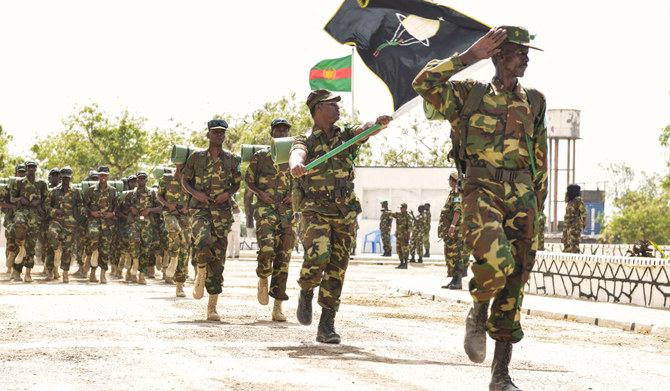
- The US agreed in 2017 to help train and equip the 3,000-strong Danab to act as a quick-reaction strike force against Al-Shabab
MOGADISHU: Somalia’s government said it had suspended and detained several members of an elite, US-trained commando unit for stealing rations donated by the US, adding that it was taking over responsibility for provisioning the force.
The Danab unit has been a key pillar of US-backed efforts to combat the Al-Qaeda-linked militant group Al-Shabab. The US agreed in February to spend more than $100 million to build up to five military bases for Danab.
Somalia’s Defense Ministry said in a statement that it had notified international partners of the theft and would share the outcome of its investigation.
A US official said in a statement to Reuters that Washington takes all corruption accusations seriously.
“We look forward to engaging with the Danab on creating the necessary safeguards and accountability measures to prevent future incidents that could affect future assistance,” the official said, without directly addressing whether any US support had already been suspended.
The US agreed in 2017 to help train and equip the 3,000-strong Danab to act as a quick-reaction strike force against Al-Shabab.
The group has been waging an insurgency against the central government since 2006.
Danab has been heavily involved in a military offensive by the Somali military and allied clan militias since 2022 that initially succeeded in wresting swaths of territory from Al-Shabab in central Somalia.
However, the campaign has lost momentum, with the government-allied forces struggling to hold rural areas and Al-Shabab continuing to stage large-scale attacks, including in the capital Mogadishu.
Washington suspended some defense assistance to Somalia in 2017 after the military could not account for food and fuel.
The US also conducts frequent drone strikes targeting Al-Shabab militants.
Kenya flood death toll since March climbs to 70
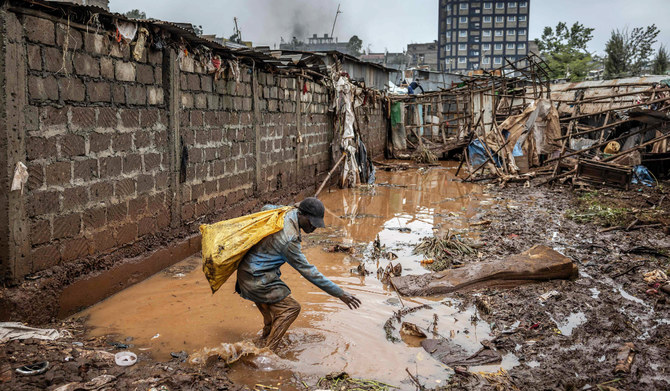
- Tanzania Prime Minister Kassim Majaliwa said on Thursday that more than 200,000 people had been affected by the disaster, with 155 fatalities and 236 people injured
NAIROBI: The number of people killed in floods in Kenya due to heavier than usual rainfall since the start of the monsoon in March has risen to 70, a government spokesperson said on Friday.
In recent weeks, Kenya and other countries in East Africa — a region highly vulnerable to climate change — have been pounded by heavier-than-usual rainfall compounded by the El Nino weather pattern.
El Nino is a naturally occurring climate pattern typically associated with increased heat worldwide, leading to drought in some parts of the world and heavy rains elsewhere.
BACKGROUND
Kenyans have been warned to stay on alert, with the forecast for more heavy rains across the country in the coming days as the monsoon batters East Africa.
“The official tally of fellow Kenyans who regrettably have lost their lives due to the flooding situation now stands at 70 lives,” government spokesperson Isaac Mwaura said on X after torrential rains killed more than a dozen people in the capital, Nairobi, this week.
Mwaura said the government would issue a “comprehensive brief” following a meeting with the national emergency response committee after the extreme weather caused chaos across Nairobi this week, blocking roads and engulfing homes in slum districts. Kenyans have been warned to stay on alert, with the forecast for more heavy rains across the country in the coming days as the monsoon batters East Africa.
At least 155 people have died in neighboring Tanzania due to flooding and landslides.
Tanzania Prime Minister Kassim Majaliwa said on Thursday that more than 200,000 people had been affected by the disaster, with 155 fatalities and 236 people injured.
He said homes, property, crops, and infrastructure such as roads, bridges, railways, and schools had been damaged or destroyed.
In Burundi, one of the poorest countries on the planet, around 96,000 people have been displaced by months of relentless rains, the United Nations and the government said this month.
Meanwhile, the UN humanitarian response agency, OCHA, said in an update this week that in Somalia, the seasonal Gu rains from April to June are intensifying, with flash floods reported since April 19.
It said four people had been reportedly killed and more than 800 people affected or displaced nationwide.
Uganda has also suffered heavy storms that have caused riverbanks to burst, with two fatalities confirmed and several hundred villagers displaced.
Late last year, more than 300 people died in torrential rains and floods in Kenya, Somalia, and Ethiopia, just as the region was trying to recover from its worst drought in four decades that left millions of people hungry.
From October 1997 to January 1998, massive flooding caused more than 6,000 deaths in five countries in the region.
Jewish campaign group led by Gideon Falter cancels London march over safety concerns
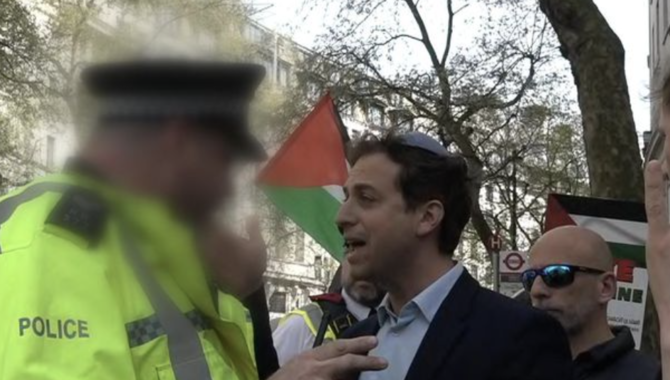
- The Campaign Against Antisemitism says safety concerns forced it to call off its “Walk Together” march after receiving threats from ‘hostile actors’
- Last weekend, a video appeared to show police prevent ‘openly Jewish’ Falter from walking near a pro-Palestine protest but a longer version of the footage painted a different picture
LONDON: The organizers of a march in protest against antisemitism, planned for Saturday in London, “reluctantly” announced on Friday that they were canceling the demonstration.
The Campaign Against Antisemitism said it was forced by safety concerns to call off its “Walk Together” march, which was scheduled to coincide with the latest in a series of pro-Palestine marches in the British capital. The organization said it had expected thousands of people to take part but threats from “hostile actors” posed a safety risk.
“We have received numerous threats and our monitoring has identified hostile actors who seem to have intended to come to any meeting locations that we announced,” the CAA said.
“The risk to the safety of those who wished to walk openly as Jews in London tomorrow as part of this initiative has therefore become too great.
“We are no less angry about these marches than our Jewish community and its allies. We want to walk.”
The group added that it wants the Metropolitan Police not only to “manage marches” but “police” them.
Last weekend, a video that circulated on social media sparked controversy as it showed a confrontation between the CAA’s chief executive, Gideon Falter, and a Metropolitan Police officer who appeared to be preventing him from crossing the road in the vicinity of a pro-Palestine march in London because he was “openly Jewish” and his presence was “antagonizing.”
Falter, who was threatened with arrest if he did not leave the area, criticized the police for their actions during the incident and claimed there were now “no-go zones for Jews” in London amid a rise in antisemitic sentiment arising from Israel’s war on Gaza following the Oct. 7 attacks by Hamas.
Police chiefs apologized twice for the officer’s choice of words. However, a former senior police officer said on Monday that the initial, short version of the video most people saw online “did not fully represent the situation.”
A longer version showed the officer expressing concern about Falter’s actions because he appeared to be deliberately attempting to provoke the pro-Palestinian demonstrators.
Berlin police clear pro-Palestinian camp from parliament lawn
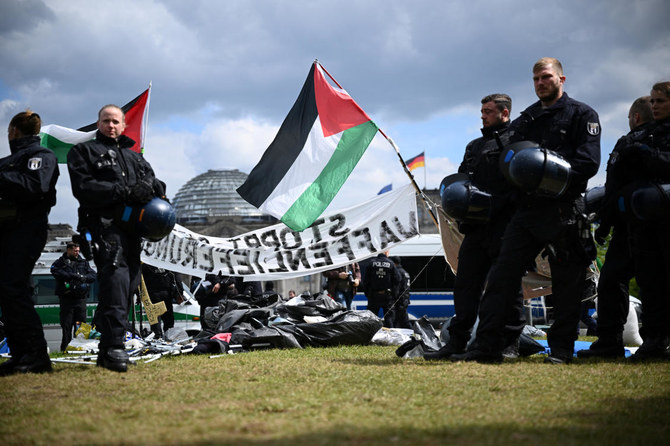
- Police dismantled tents, forcibly removed protesters and blocked the surrounding area to stop others arriving
- "The idea was to draw attention to that and ... to the German complicity and active enabling of the Israeli genocide in Gaza," the camp organizer, Jara Nassar, said
BERLIN: Berlin police on Friday began clearing a pro-Palestinian camp set up in front of the German parliament by activists demanding the government stop arms exports to Israel and end what they say is the criminalization of the Palestinian solidarity movement.
Police dismantled tents, forcibly removed protesters and blocked the surrounding area to stop others arriving.
The action followed clashes between demonstrators and police on US campuses and a blockade at Paris’s Sciences Po university, part of international protests to decry Israel’s military campaign in Gaza and Western support for Israel.
The Berlin camp ‘Besetzung Gegen Besatzung’ — ‘Occupy Against Occupation’ — began on April 8, coinciding with the start of International Court of Justice hearings in Nicaragua’s case against Germany for providing military aid to Israel.
“The idea was to draw attention to that and ... to the German complicity and active enabling of the Israeli genocide in Gaza,” the camp organizer, Jara Nassar, told Reuters.
Israel strongly denies accusations that its offensive in Gaza, which aims to destroy the Palestinian militant group Hamas, constitutes a genocide.
Nassar and a dozen protesters sat on the ground, chanting pro-Palestinian slogans and songs as police with loudspeakers called on them to leave.
“We look at what is happening in the US ... with admiration. There is no reason to believe we should stop now,” said Udi Raz, a PhD student at Berlin’s Free University and a member of the Jewish Voice association.
Raz, who wore a Jewish kippah with the Palestinian flag colors and held his phone in a live social media broadcast of the clearance, said Jewish activists had joined the camp and held a candle-lit Passover dinner there this week.
Police said the prohibition order for the camp, which had been granted authorization at the start of the protest, was due to repeated violations committed by some protesters, including the use of unconstitutional symbols and forbidden slogans.
“Protection of gatherings cannot be guaranteed at this point because public safety and order are significantly at risk,” police spokesperson Anja Dierschkesaid said, adding tents had to be moved daily under local regulations to maintain the lawn.
“For the German government, grass matters more than the lives of more than 40,000 innocent people in Gaza murdered by the Israeli military,” Raz said.
Philippine police kill an Abu Sayyaf militant implicated in 15 beheadings and other atrocities
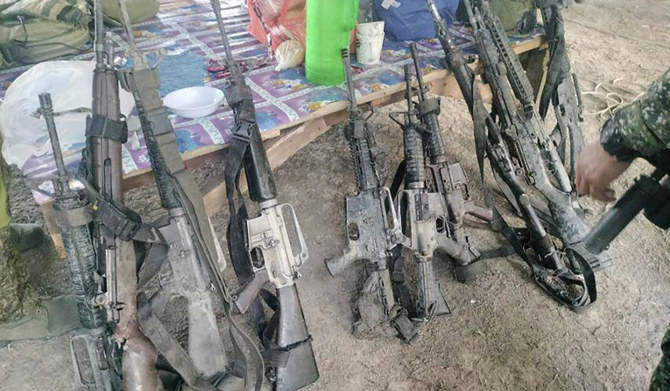
- A confidential police report said that Abdulsaid had been implicated in at least 15 beheadings in Basilan, including of 10 Philippine marines in Al-Barka town in 2007 and two of six kidnapped Vietnamese sailors near Sumisip town in 2016
MANILA: Philippine forces killed an Abu Sayyaf militant, who had been implicated in past beheadings, including of 10 Filipino marines and two kidnapped Vietnamese, in a clash in the south, police officials said Friday.
Philippine police, backed by military intelligence agents, killed Nawapi Abdulsaid in a brief gunbattle Wednesday night in the remote coastal town of Hadji Mohammad Ajul on Basilan island after weeks of surveillance, security officials said.
Abu Sayyaf is a small but violent armed Muslim group, which has been blacklisted by the US and the Philippines as a terrorist organization for ransom kidnappings, beheadings, bombings and other bloody attacks. It has been considerably weakened by battle setbacks, surrenders and infighting, but remains a security threat particularly in the southern Philippines, home to minority Muslims in the predominantly Roman Catholic nation.
Abdulsaid, who used the nom de guerre Khatan, was one of several Abu Sayyaf militants who aligned themselves with the Daesh group.
A confidential police report said that Abdulsaid had been implicated in at least 15 beheadings in Basilan, including of 10 Philippine marines in Al-Barka town in 2007 and two of six kidnapped Vietnamese sailors near Sumisip town in 2016. The Vietnamese were seized from a passing cargo ship.
He was also involved in attacks against government forces in 2022 and a bombing in November that killed two pro-government militiamen and wounded two others in Basilan, the report said.
Abdulsaid was placed under surveillance in February, but police forces couldn’t immediately move to make a arrest because of the “hostile nature” of the area where he was eventually gunned down, according to the report.
On Monday, Philippine troops killed the leader of another Muslim rebel group and 11 of his men blamed for past bombings and extortion in a separate clash in a marshy hinterland in Datu Saudi Ampatuan town in southern Maguindanao del Sur province, the military said.
Seven soldiers were wounded in the clash with the members of the Bangsamoro Islamic Freedom Fighters.
The Abu Sayyaf and the Bangsamoro Islamic Freedom Fighters are among a few small armed groups still struggling to wage a separatist uprising in the southern Philippines.
The largest armed separatist group, the Moro Islamic Liberation Front, signed a 2014 peace pact with the government that eased decades of sporadic fighting.
Moro Islamic Liberation Front rebel commanders became parliamentarians and administrators of a five-province Muslim autonomous region in a transition arrangement after signing the peace deal. They are preparing for a regular election scheduled for next year.





